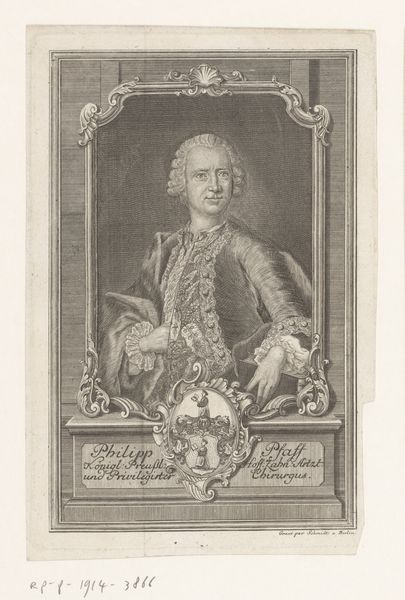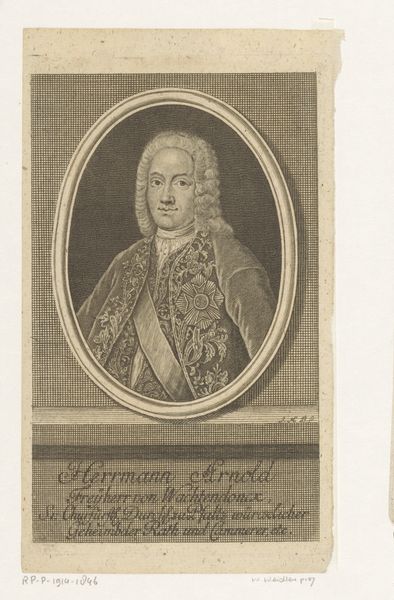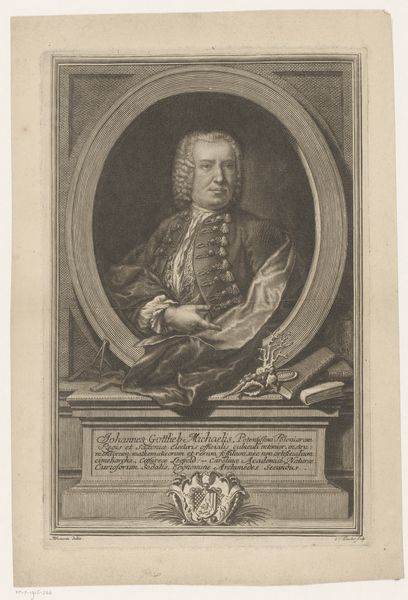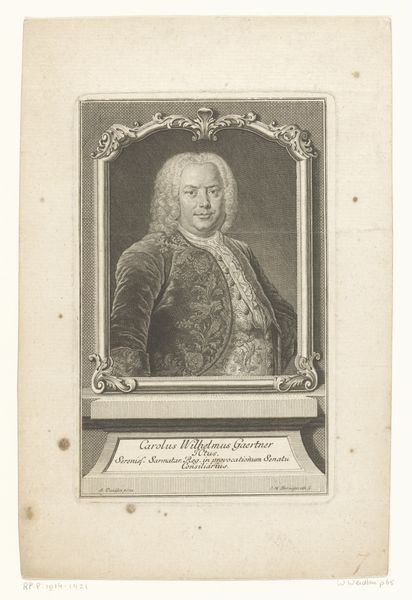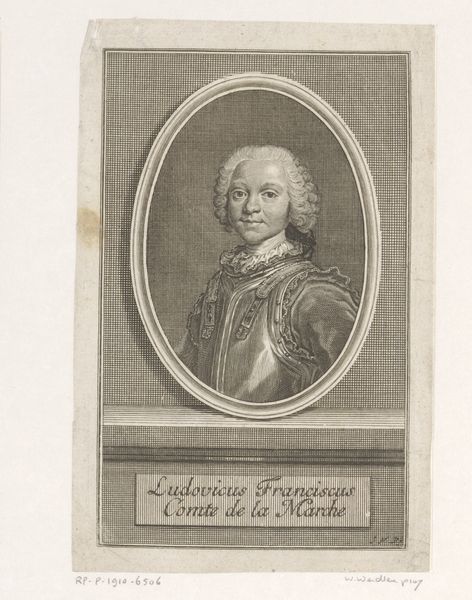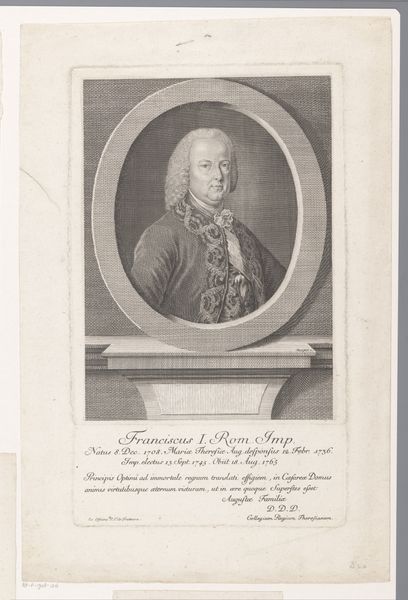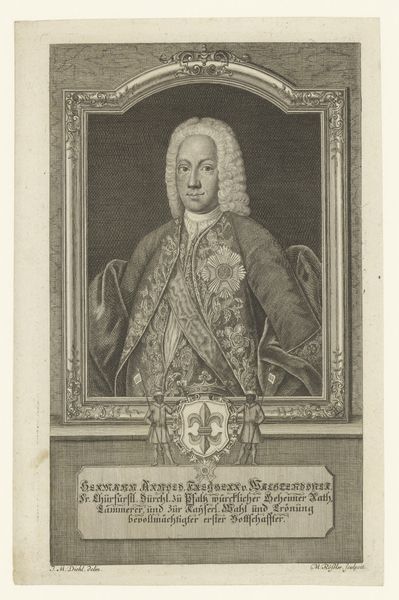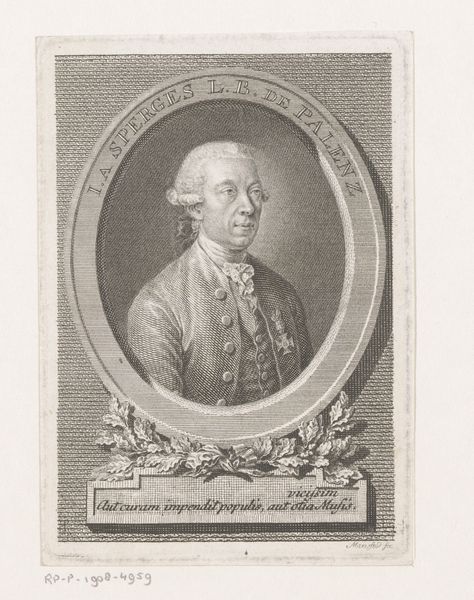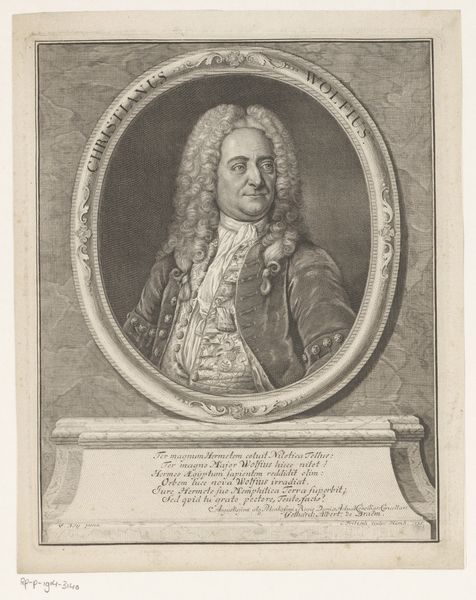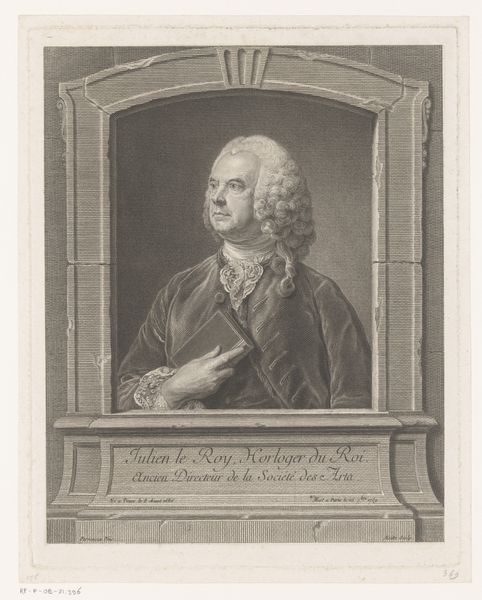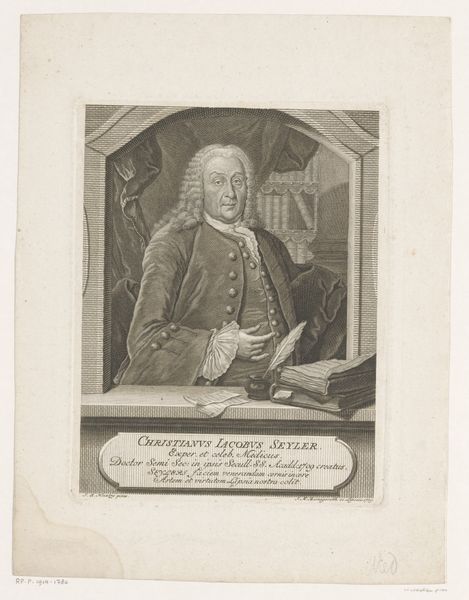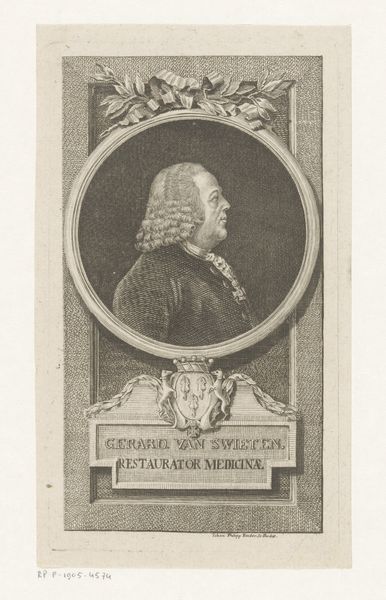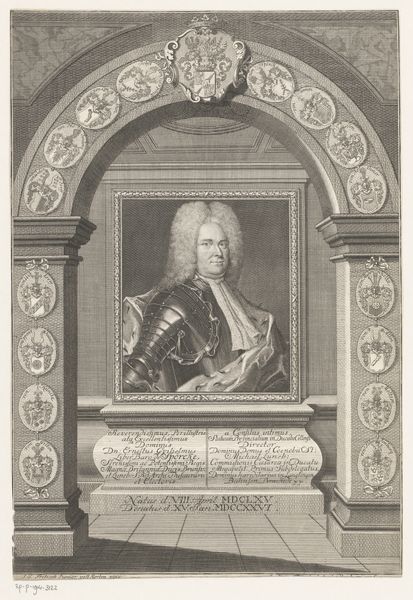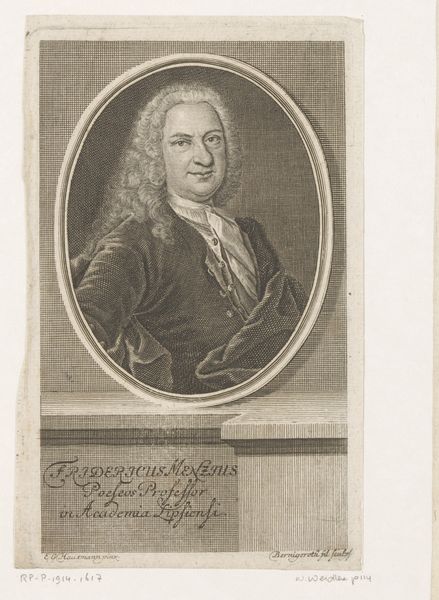
print, engraving
#
portrait
#
baroque
# print
#
engraving
Dimensions: 233 mm (height) x 170 mm (width) (plademaal)
Editor: This is an engraving from 1752 by Jonas Haas, titled "Gerhard de Lichtenberg." The detail is incredible. The way they captured the textures of the wig and the fabric… it’s really quite impressive. What stands out to you about this portrait? Curator: What I see is a representation of power and status meticulously constructed through visual language. Think about the Baroque era: it was defined by absolute monarchies, social hierarchies, and the burgeoning influence of mercantile elites. This portrait performs specific cultural work. Editor: Cultural work? Could you expand on that? Curator: Yes, certainly. Consider Lichtenberg's pose, attire, and the architectural framework in which he's presented. These aren't accidental details. How do they reflect the socio-political dynamics of his time? Editor: He looks very self-assured. I see what you mean, it’s a very staged kind of power… The ornate window and the text also make it seem like he's meant to be memorialized. Curator: Precisely! These aren't just aesthetic choices, but deliberate assertions of social standing, embedded within a system where appearances reinforced authority. Even the act of creating and circulating this portrait signifies a level of privilege denied to most. Do you see a way in which it excludes the commoners of the time? Editor: Wow. I hadn't really considered that. So it’s not just a portrait; it's an artifact that embodies the power structures of its time. I'll definitely remember that when looking at art from this era. Curator: Exactly! Art doesn't exist in a vacuum, but reflects, reinforces, and sometimes even resists the dominant ideologies of its era. Seeing art as embedded with social, cultural, and power dynamics makes it very powerful.
Comments
No comments
Be the first to comment and join the conversation on the ultimate creative platform.
